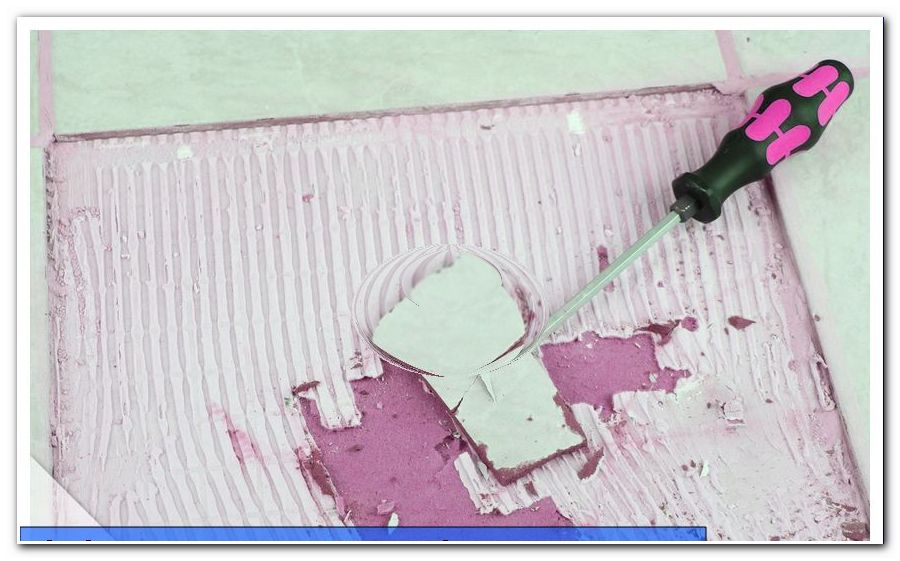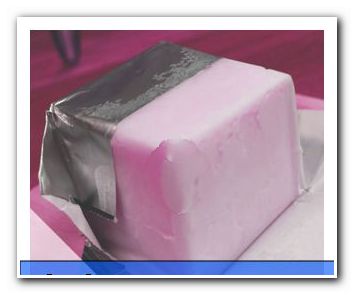Removing dowels from the wall: this is done in no time

- Remove universal dowel
- With corkscrew
- With screw
- With pliers
- "Who does not want to get out ...
- drill
- Remove special dowel
- Plastic and metal
- hollow wall anchors
Dowels are very handy to hang things on the wall, to attach or otherwise use as a holder. But how can I remove the dowel from the wall ">
Who does not know, when preparing, rearranging or relocating:
The furniture has been cleared out, pictures, shelves and cupboards hung down and now there are the old holes in the wall. Holes that still need to be filled. But first you have to remove the dowels - only how? Depending on the dowel and wall, there are different methods to remove a dowel from the wall.
Remove universal dowel
Universal dowels (also called mounting dowels) are available in various designs and sizes. Due to their universal applicability (hence the name) they are very popular and widespread, as they can be brought into the wall without special tools.
With corkscrew
Turn a corkscrew until it grasps into the dowel hole and then gently pull out the dowel. If it does not succeed on the first try, turn the corkscrew slightly deeper into the dowel.

Tip: When pulling out, please pull and shake very carefully so as not to create a much larger hole.
With screw
Take a screw that fits well into the dowel hole. Turn these two to three turns into the dowel so that the thread of the screw holds but does not yet cause the dowel to spread.

Once the screw is in place, pull it out with a pair of pliers and the dowel.
With pliers
If the first two methods have not removed the dowel, then the dowel may have eased at least somewhat, or has even come a bit in the way. With a flat-tipped pliers, you can now try to grab the dowel on the edge. With gentle shaking and pulling the dowel can now solve. The advantage of this method is that there is no pressure on the dowel from the inside, which makes it more flexible.

"Who does not want to get out ...
... must go in! "
This is certainly not the noblest method, but is particularly suitable for Gibskartonwänden (and other cavity solutions) and dowels without a wide margin. If the dowel has a wide edge, it can be cut off with the help of a craft knife or the blade of a carpet knife. Please do it very carefully, otherwise you will do more damage to the wall and your fingers than you would like.

To countersink the dowel, use a thick screw (slightly thicker than the screw you would use for the dowel) and use it as a firing pin. Insert the screw and gently hammer the dowel into the wall with the hammer.
Tip: Make sure you are very careful, otherwise you have a huge hole in the wall later that even with putty is not fix fix.
If you have a thin dowel, but have no cavity behind the wall, you can also try to fold it in the hole and make it disappear. A very base method, but the main thing of the dowels is gone.
drill
With this method, a hole will be created that is as big as the dowel, but then the dowel is out of the way. You will have to choose this method if the dowel has been glued in or nothing else helps.

Take a drill and drill the dowel from the inside. So the dowel is milled away from the inside and the remains can be removed with the vacuum cleaner from the hole.
Tip: All these methods are suitable for plastic dowels. Impact dowels and the like can be removed as long as they were not glued.
Remove special dowel
Special substrates, building materials, materials, construction techniques also require special dowels. Here are two ways in which the dowel can be easily removed from the wall using the right technique.
Plastic and metal
If you find in a special dowel (plasterboard dowels, pore concrete dowels and insulating dowels) in a wall, you can simply use the (mostly supplied) screwing / dowel guide with which you put the dowel into the wall. From a guide rail - which pre-drills an opening - to special bits for the cordless screwdriver, there are various ways to bring such a dowel in and above all out of the wall.
Here, the tool is clamped in the cordless screwdriver, inserted into the dowel and slowly and carefully screwed out.

Tip: With a long, thin, flat-bladed screwdriver, it can work, but if you have the right tool on hand, you should play it safe.
Plasterboard dowels made of metal (with self-tapping thread) are best turned out of the wall with a large (suitable) Phillips screwdriver.

hollow wall anchors
Metal cavity dowels have the characteristic that they span in the cavity - like an umbrella. To loosen this wedging you have to turn the screw into the dowel so that the screw reaches the back of the thread. Now the screw holds itself in the back part of the dowel and looks out front still quite a bit.

Now take a hammer and carefully insert the screw into the dowel. This will release the anchoring again. The dowel cocked and slimming. If the screw does not go any further, you can now grasp the screw head with a pair of pliers. With careful pulling on the screw head, you can now remove the dowel.




